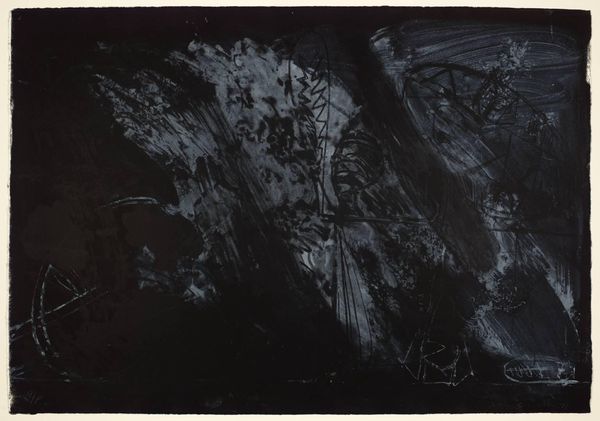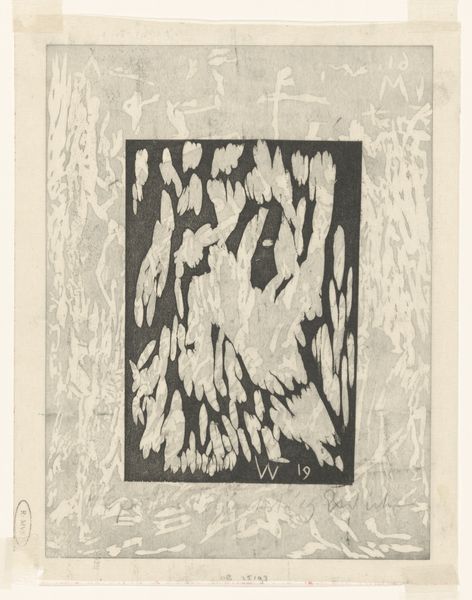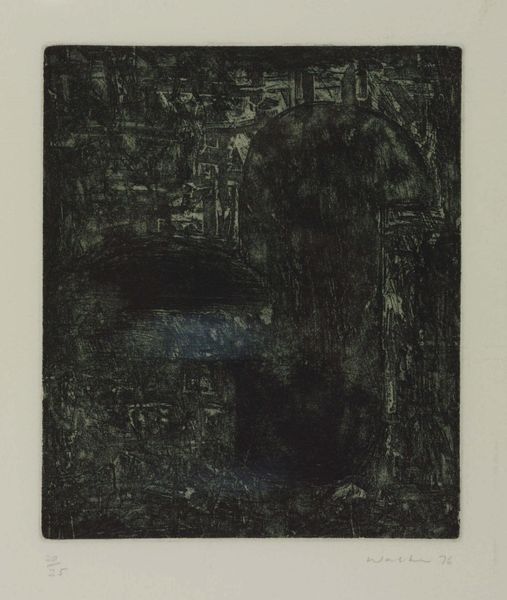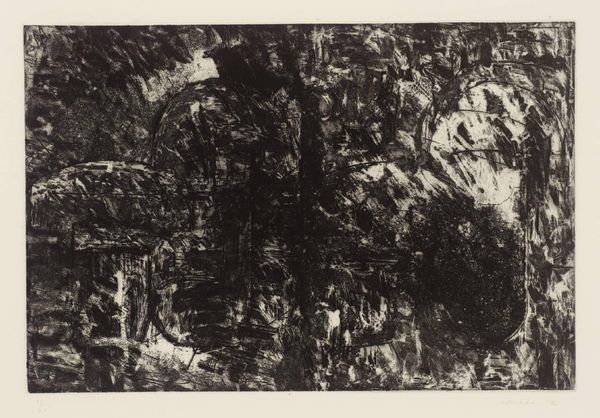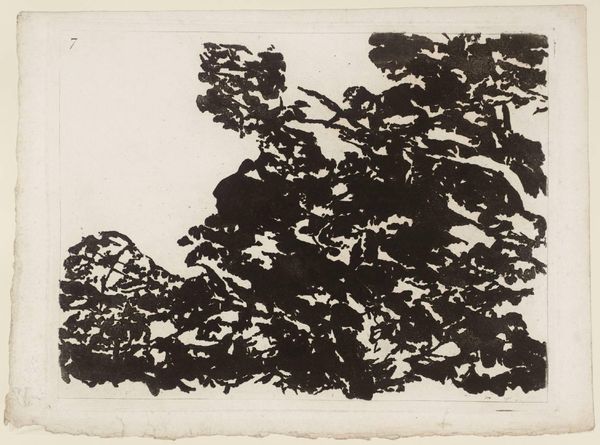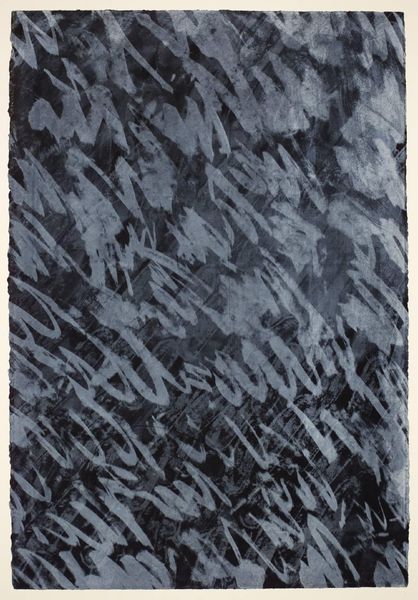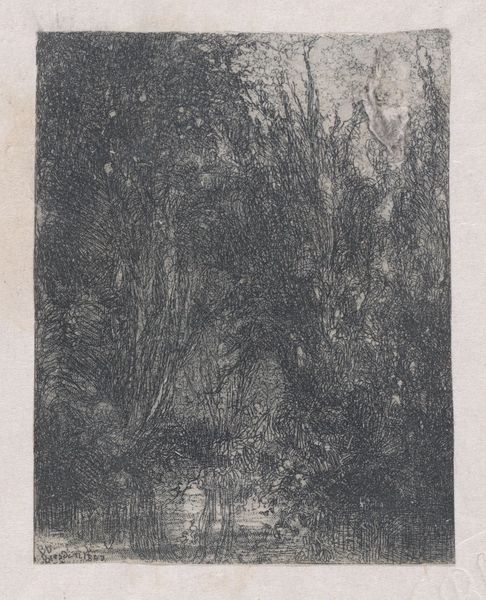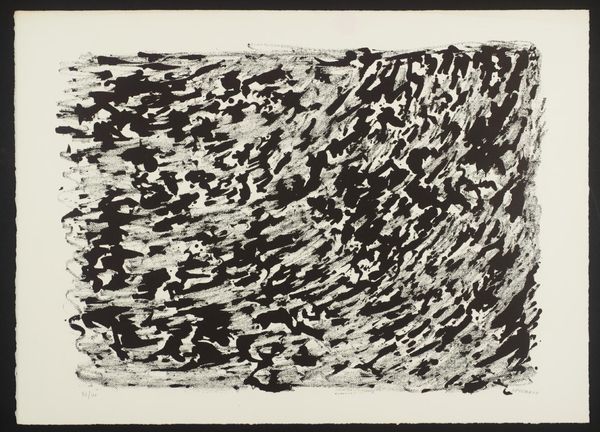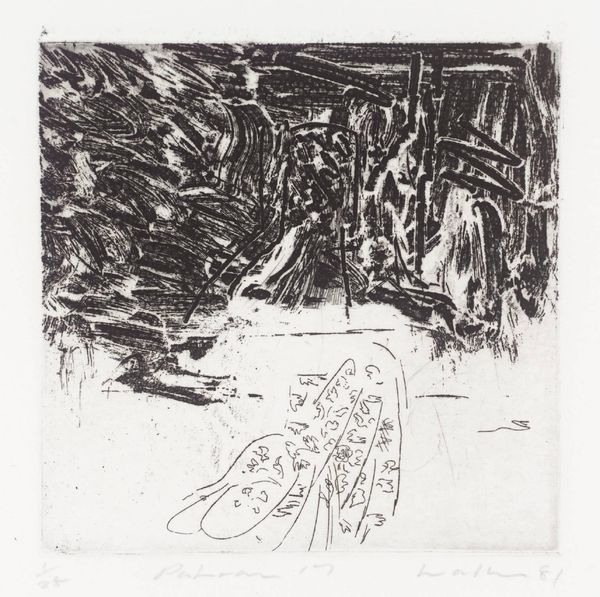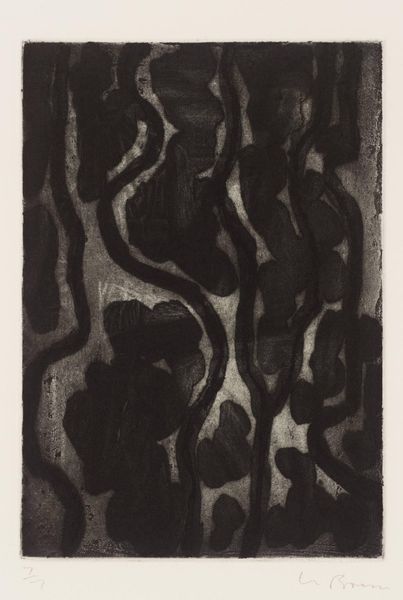
Dimensions: 16 x 22 cm
Copyright: Creative Commons NonCommercial
Curator: Alfred Freddy Krupa created this graphite drawing in 2011, giving it the rather intimate title, "The view from the windows of my temporary home." Editor: My first thought is: austere. Stark, almost. The high contrast between the black ground and the fleeting, fragile white marks is really striking. What kind of view is this supposed to be, anyway? Curator: The image appears almost as a photographic negative, but look closer at the iconography. The composition is undeniably landscape, but rendered through the vocabulary of abstract expressionism. We see repeated vertical strokes, maybe suggesting rainfall or the blur of branches. But also, what could be house forms buried within the heavy black tonality. Editor: So you’re seeing a dialogue between something representational, like houses and trees, and this really visceral, abstract mark-making? I’m curious about Krupa’s choice to constrain himself to graphite on what looks like black paper. The limited palette forces a reliance on texture and tone. Curator: Yes, absolutely. The monochrome enforces a concentration on light and shadow as potent symbols. Light pushing through the darkness could signify hope or revelation amid a time of personal displacement. It has parallels, I think, in earlier artistic depictions of Romantic era landscape painters wrestling with overwhelming experiences. The house itself, even partially obscured, always offers a deep cultural symbol, too, evoking not just shelter, but memory and family, especially during times of transition. Editor: And consider those geometric structures, fighting to surface through that murk! Perhaps they’re acting as structural signifiers here – the composition needs that weight, something beyond the fleeting lines, to hold the whole image together. The repeated verticals add to a sense of depth, though. Curator: That sense of structure, I agree, could be indicative of the psychological need to ground oneself, or build something enduring during a "temporary" situation. The landscape genre, itself, carries its own emotional burden. The artist gives us access to an internal view, transformed. Editor: Ultimately, what I’m left with is this sense of resilience, of form pushing back against chaos, of observation transmuted by the act of drawing. Curator: Exactly, that potential is inherent in the artwork – it carries both vulnerability and strength, visible for anyone who really pauses to consider what is portrayed.
Comments
No comments
Be the first to comment and join the conversation on the ultimate creative platform.
